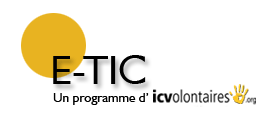ContextHerding practices
A herder is a worker whose main activity consists of leading the cattle in areas where pasture is available for his animals. In the Saharan region, many herders are semi-nomadic or nomadic. The semi-nomadic herders lead their animals to food and water sources throughout the day and then return back to their fixed dwelling. They do not need to march excessively in order to have access to pasture and water because they live in areas where the rain falls on a rare but regular basis. Nomadic herders, on the other hand, are on the move a good part of the year following food and water sources, as available depending on seasons and the evolving climate. Typically, they have to walk for miles before finding water. Some herders are sedentary, as they live in areas where enough pastures are available to feed their cattle without traveling anywhere. Access to waterAccess to water constitutes a real problem to herders. Most of them are using wells which are generally free but the access to which is not easy. During the rainy season, water is abundant and they do not need to go far to find rivers. However, between December and June, the wells are dry and herders would either wake early to be among the first at the well, or walk kilometers to find water for their cattle. In some areas where the water is made accessible by national services (Senegalaise des Eaux), they just buy the water they give to their cattle, the price of the water depending on the size of the basin. The main livestock rearing areas (except for the Delta and near rivers) are without permanent water points. The surface water there dries up rapidly after the onset of the dry season. The search for water consequently becomes a serious problem throughout the dry season for the herds and their owners. The dispersion of existing water points (permanent ponds, wells, shallow wells) and their distance from pastures exploitable in the dry season demands long journeys, which exhausts the animals. The available resources only suffice to cover basic needs. Herd productivity drops during this period. Diseases and lack of resources are the most severe limitations of livestock production systems. Access to foodNomadic stock rearing: Nomadic stock raising is characterized by frequent movements of the herders and their stock, without fixed camps, according to the availability of resources. The areas of nomadic stock-rearing are either distinct or confluent and the family groups are more or less separated. Production follows a seasonal cycle. This type of system, called pure pastoral system, is found in the sub-desert zones in the north of Senegal (Adrar, Azaouad, Azaouak and Tilemsi) and in those of the northern Sahel such as the Gourma and the Hodh and in Mali. The breeds raised in these regions are zebus (Moor and Tuareg) for cattle, Saharan sheep and goats for the small ruminants and camels. The products are milk, meat and wool. The milk provided by cattle, goats and camels is insufficient and is all consumed fresh or made into cheese. Meat is provided by goats and hair sheep. Long-haired sheep produce wool. There is no salable surplus of these products. Agro-pastoral systems: These are systems where crop production and stock rearing cohabit. According to the predominance of one or the other component, a system where livestock predominate or where crops are more important can be distinguished. Transhumant systems: It is characterized by back and forth movements between pastoral territories by pastoral groups or communities seeking land resources other than their own. This movement pattern, called transhumance is made according to fixed axes and for a given period of time. Transhumance is characteristic of the Sahel. It takes the herders from south to north at the onset of the rainy season to remove the herds from the agricultural areas or areas which are flooded (in the case of the Niger Delta). The return south is made according to the progressive drying up of watering points and the exhaustion of the northern pastures. It is in the dry season that resources available for the animals are more plentiful in the south (water in watercourses, pasture after floods recede, perennial grasses, crop by-products and residues). |

